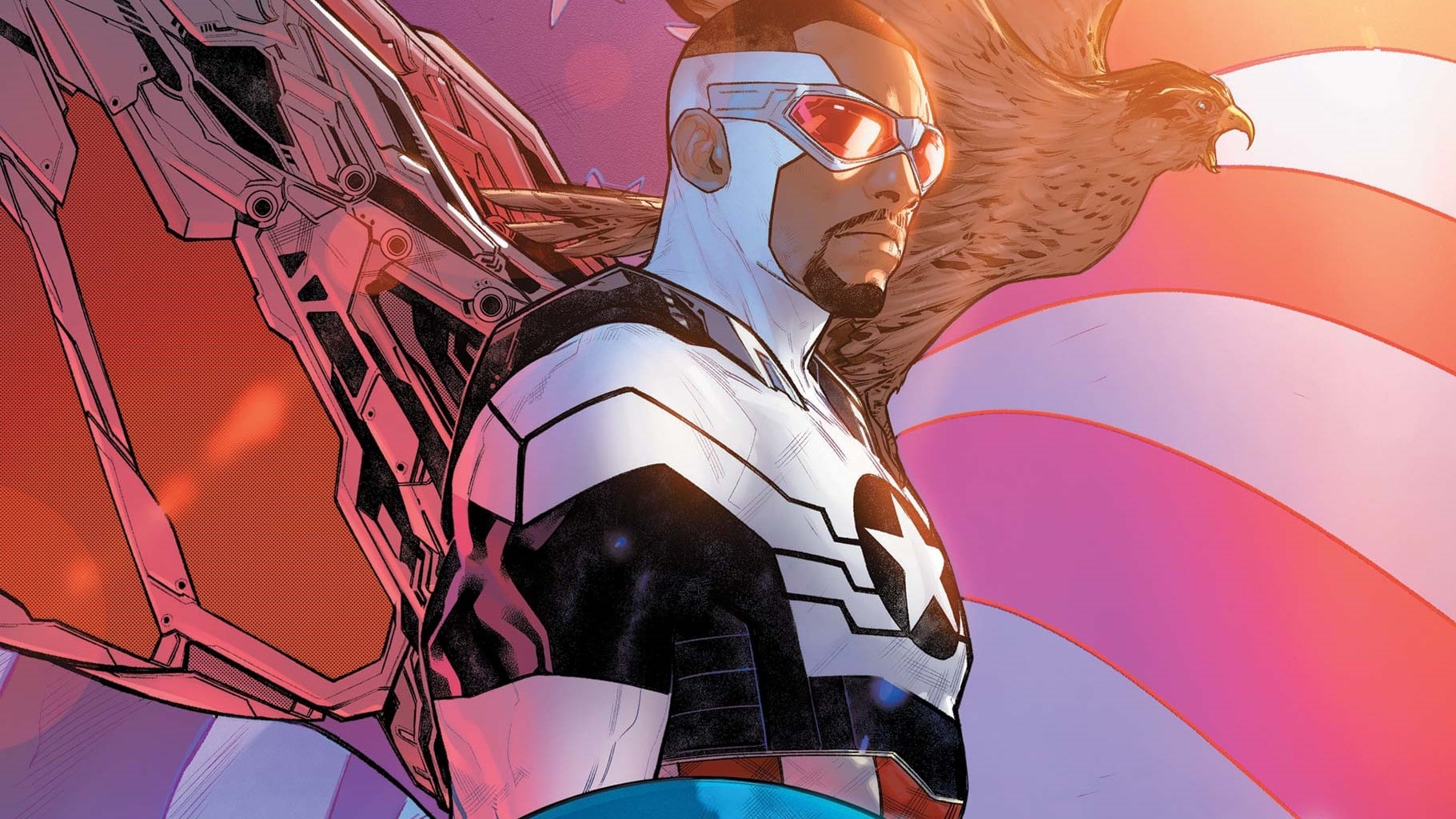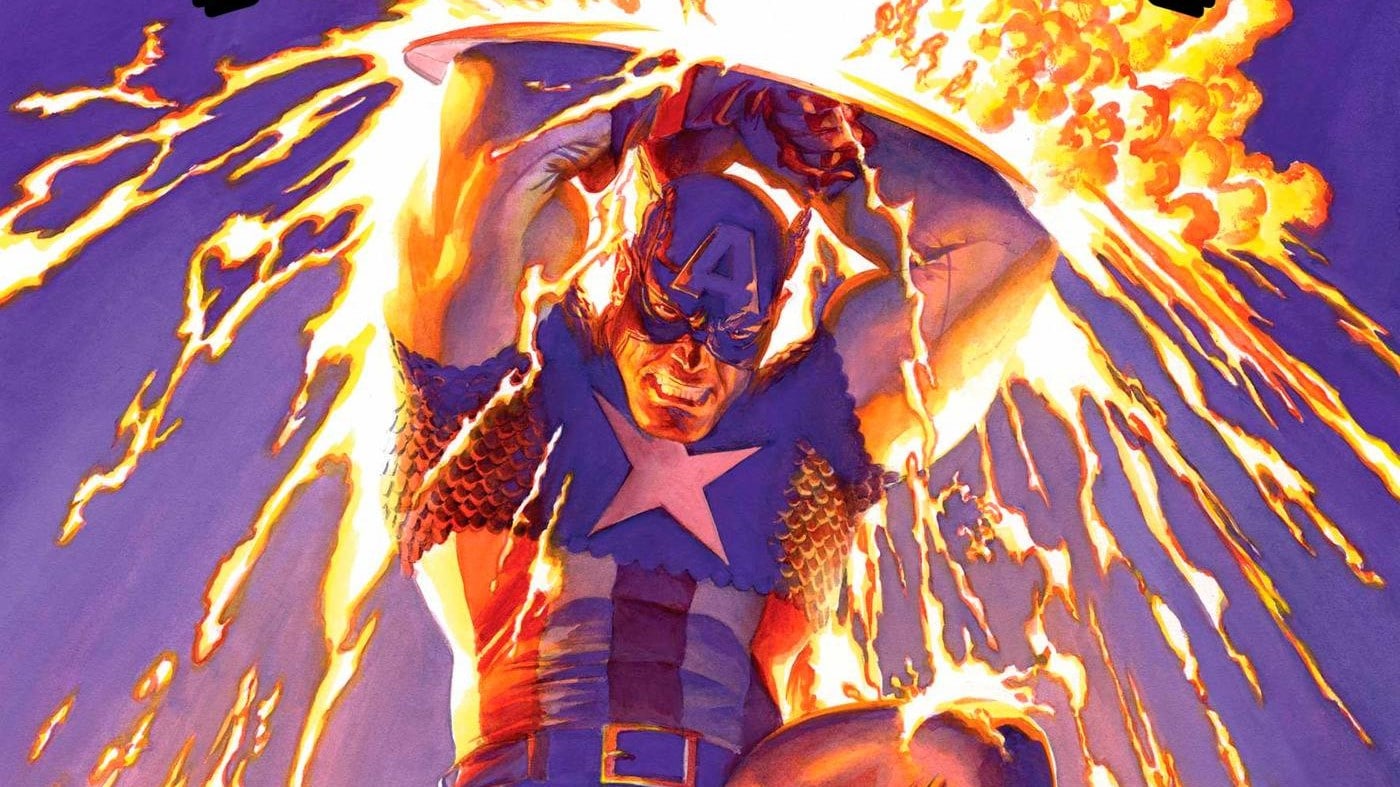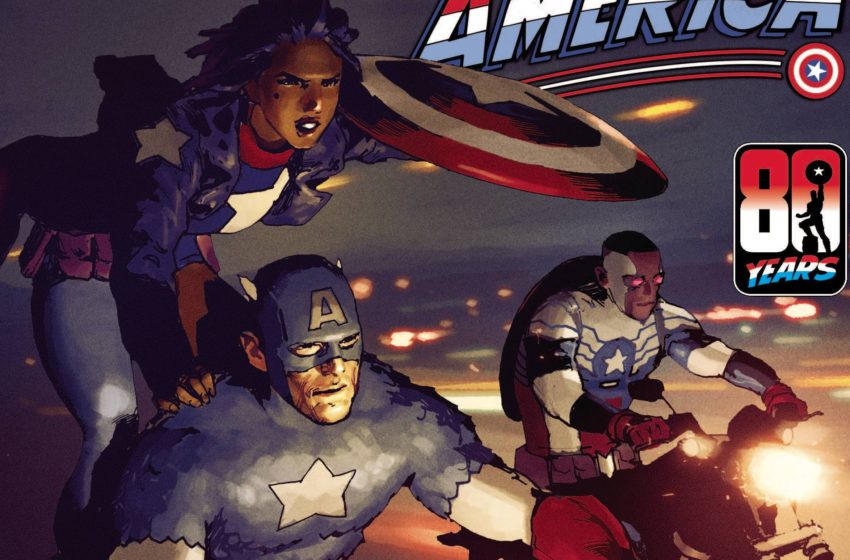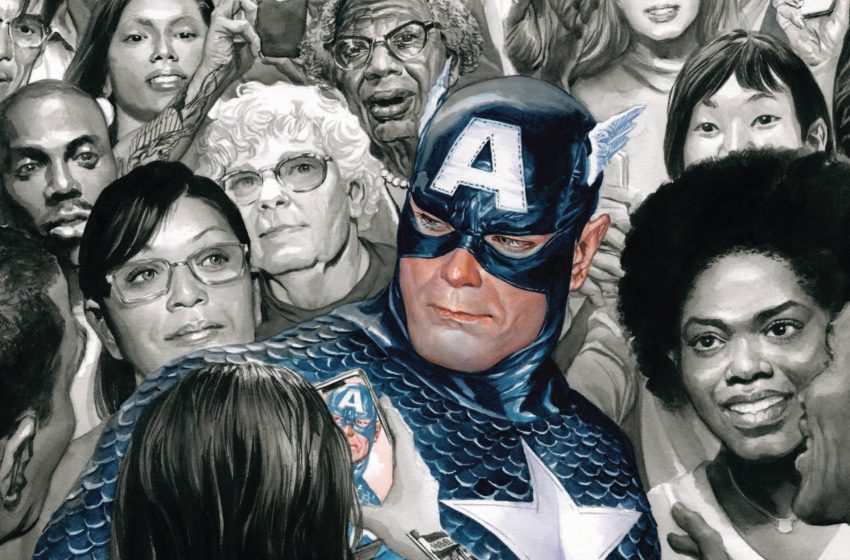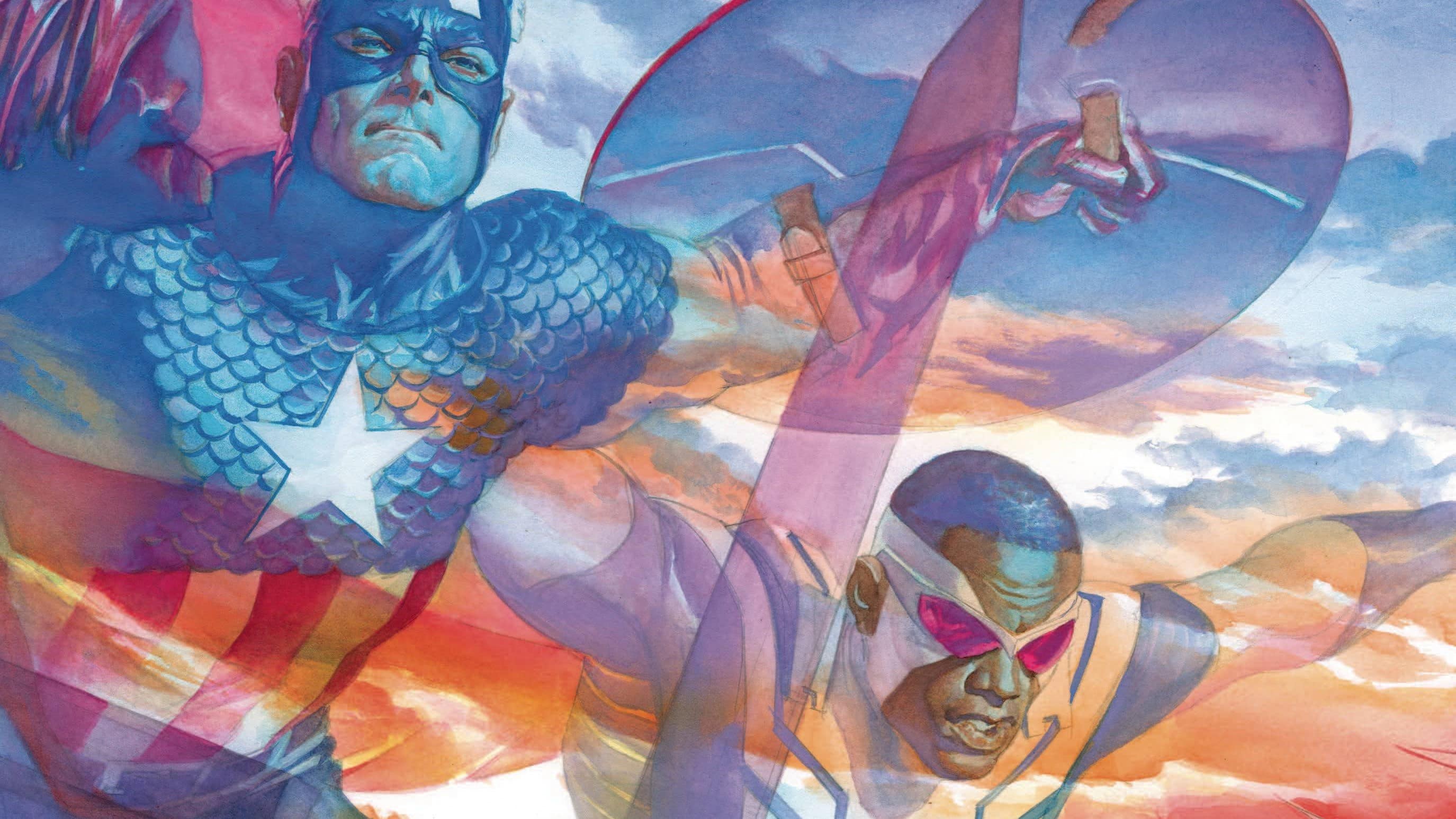Following a lead from Misty Knight, Sam Wilson intercepts a mysterious group hijacking what appears to be an empty train. As he digs deeper, he discovers the plot may be connected to a crucial piece of Captain America history … and Wakanda. The world is ready for two Captain Americas, but is Sam ready for what comes next? Find out in Captain America: Symbol of Truth #1, written by Tochi Onyebuchi, drawn by R.B. Silva, colored by Jesus Aburtov and lettered by Joe Caramagna.
Finally, some good f—ing food. For the mantle of Captain America, it’s been a long time coming. For Sam Wilson, it’s been even longer.
Last month’s Captain America #0 was largely a bland, standalone story, a throwback battle between Sam and Steve Rogers, the Captains America, vs. Arnim Zola, with the recent supa-best-buddies tone of The United States of Captain America thrown in. After Ta-Nehisi Coates’s meditations on the meaning of power and presentations of all-female support systems in his run on Cap, the zero issue dared to be boring, save for a page that teased Sam’s adventures to come.
For those with short memories, this isn’t the former Falcon’s first rodeo in the red, white and blue. Seven years ago, Sam was set up for failure as Cap by Nick Spencer (after being handed the mantle during the Rick Remender run). Spencer’s idea was, expressly, society can’t handle a Black Captain America, which was an idea worth exploring. But when you go into something like that knowing it’s going to be a temporary paradigm shift, and when you can see those mechanics in play, the narrative has to work harder to make you accept the central conceit. Jason Aaron and Russell Dauterman concocted a similar version of the replacement-hero story better in The Mighty Thor. Spencer gave the Marvel Universe over to the Nazis at a time when that was the last thing anyone wanted to read about.

But what happens when you push past that? When we all accept that Sam Wilson is Captain America. He wears the colors. He wields the shield. He’s the guy. Yes, more accurately, he’s a guy — Steve has his own series launching next month — but the point is we’re not replaying the both-sides-are-bad political insecurity of the Spencer run. Sam is Cap, and Cap has stuff to do. What happens then? That’s what I’m excited to read about.
That’s not to say the book is without racial politics. A simmering plot is established that appears to want to examine and challenge Black 616 Americans’ relationship with and understanding of Wakanda. Sam makes his stance on the matter clear while having the wisdom to be self-critical: “Making this place a country where we can live and thrive, that’s my job. This movement means I ain’t doin’ so hot.” I’m limited in how much I can comment on this scene’s effectiveness, but on this and other matters, writer Tochi Onyebuchi — a former civil rights lawyer in addition to writing sci-fi and fantasy novels — earns the reader’s trust.
Half the first issue is an action sequence — Sam and Joaquin Torres, the current Falcon, get attacked investigating a train that may or may not have black-market Super Soldier Serum on it. Onyebuchi writes great dialogue that’s action movie-esque without leaning all the way into the cliches of action movies. “I bought a gold toilet yesterday” is a great line to come out of the mouth of a generic goon defiant in the face of interrogation.
Onyebuchi is joined by artist R.B. Silva, who created no less than two techno-horrific visions of the future in Powers of X, a clear sign Marvel wants this book to succeed. Paired with colorist Jesus Aburtov, the two draw gorgeous action in the Mighty Marvel Manner. But just as important, they draw good character work, evidenced by a scene in which Sam and Misty Knight talk about their respective experiences growing up in Harlem atop a building as the sun goes down.

Sam’s rapport with Misty, his on-again, off-again girlfriend and work partner, is so easy, like two kids who grew up together and have fooled around some. Their relationship is complicated, their dialogue full of nuance. Silva does the facial acting to match, while Aburtov gives the scene the warm glow and varied colors of sundown. If you ship these two, you just got a meal.
Drawing back-and-forth talking head scenes in a way that maintains reader interest is no easy feat, but Silva excels at it, both here and in a later exchange between villains that varies panels between shadowy closeups and wide shots that play with negative space and erase panel borders.
But the best part is, there isn’t a standard Cap villain to be found till the end. Rather than have someone like Zola or Batroc the Leaper show up and chew the scenery with their colorful, eccentric villainy, Onyebuchi and Silva spend the issue setting up the status quo, the supporting cast and letting the reader know Sam is in good hands before dipping into the old rogue’s gallery. And even then, it’s an out-of-costume Crossbones in prison, being approached by the man set up to be the book’s big bad, Hunter the White Wolf, whom my colleague Vishal Gullapalli informed me last time ’round was a Christopher Priest-and-Mark Texeira-created Black Panther foe. This has the potential to be a good pairing that serves the dual needs of a Captain America book. You need an action villain you can punch but who remains a menacing, credible threat? Crossbones. You need a cerebral villain who can speak to the book’s themes without coming off like another trip to the well? White Wolf. I look forward to seeing this plot play out.
Some people have balked at the teaser of Deadpool on the cover to issue #2. And sure, ol’ Wade is a cash-grab guest star these days, though not quite at the height of his powers. But still, he did just guest in the best issue of the current Wolverine run, and if I haven’t yet made it clear: This issue buys the creative team a lot of good will. They can have a little Deadpool. As a treat.
Dan Grote is the editor and publisher of ComicsXF, having won the site by ritual combat. By day, he’s a newspaper editor, and by night, he’s … also an editor. He co-hosts The ComicsXF Interview Podcast with Matt Lazorwitz. He lives in New Jersey with his wife, two kids and two miniature dachshunds, and his third, fictional son, Peter Paul Winston Wisdom. Follow him @danielpgrote.bsky.social.

